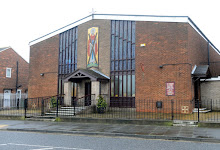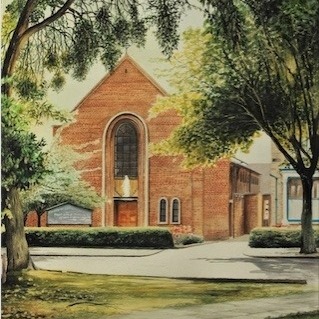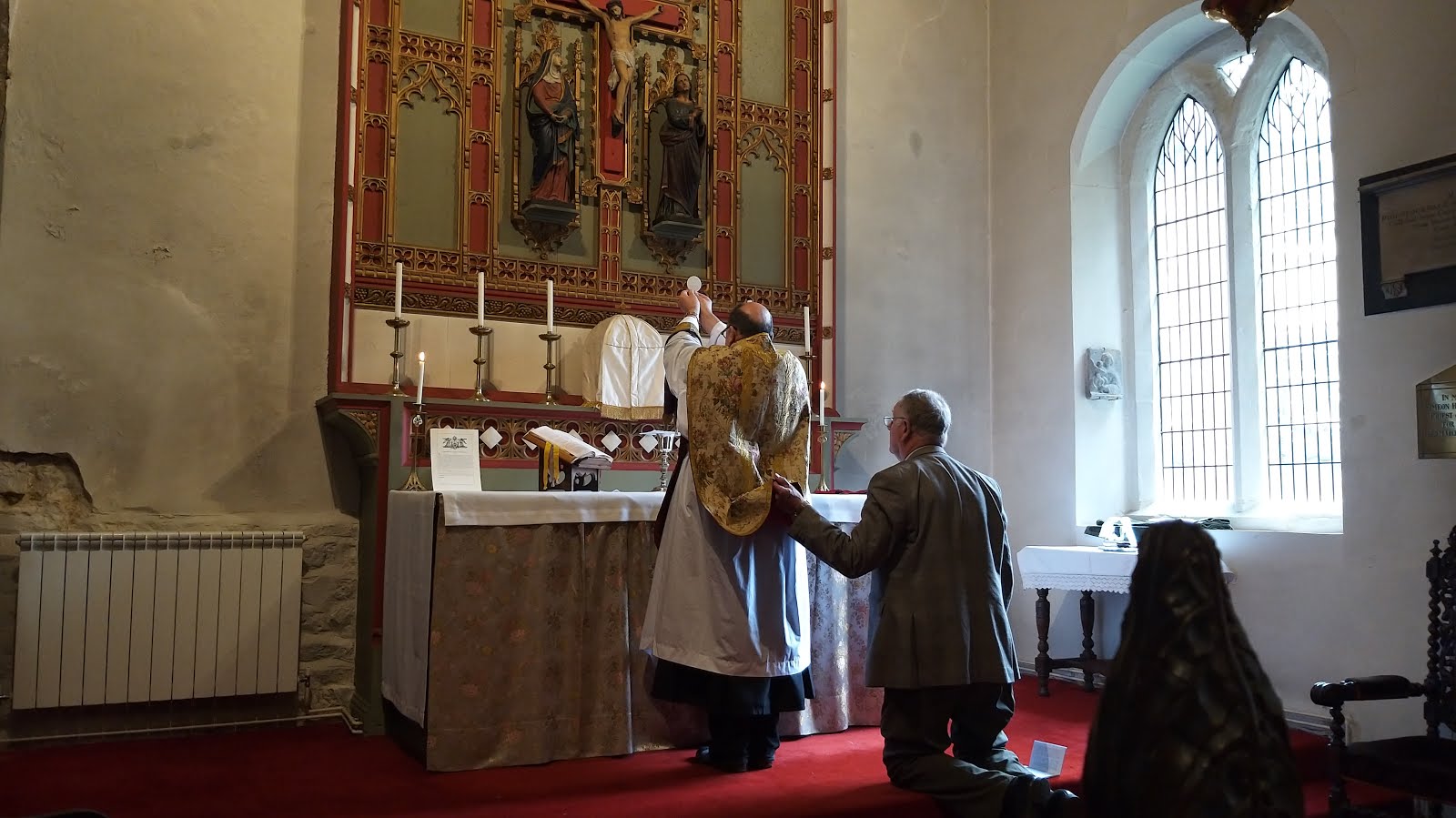We must start from the premise that almost all diocesan priests are already overworked and would find difficulty taking on the celebration of additional Masses. It follows that, either more priests must be found or that Latin Masses will need to be provided in substitution for existing novus ordo Masses, rather than in addition.
Taking the first point, there is an emerging source of priests who are more than keen to to provide usus antiquior Masses. I refer to the traditional Orders. The Priestly Fraternity of St Peter has had several Englishmen ordained to the priesthood in recent years, and expects to have a steady stream of ordinations during the next decade. There is every prospect that the number of vocations to the priesthood in the traditional orders will continue to grow.
We have already benefited from the Institute of Christ the King Supreme Priest taking over churches in New Brighton and Preston, and the FSSP taking over one in Warrington. Although it is too soon to make a final judgement, the indications are that these are prospering as centres for traditional liturgies. It is to be hoped that as the traditional orders ordain more priests, churches will continue to be handed over to their care. This solution tends to work well in the larger towns that have several Catholic Churches, and where consideration is already being given to closing churches. This is surely a win-win solution.
A second approach is for each diocese to consider where Latin Masses would be best located. In most cases, this would mean selecting churches in the greater centres of population, where larger congregations can be expected. Currently, Latin Masses are frequently provided in remote or village locations, and it is unsurprising that these attract small congregations. In the case of the Diocese of Middlesbrough, The obvious locations would be Hull, York, Scarborough and Middlesbrough itself, all of which have multiple churches.
A process of merging parishes in in these locations has been going on for years, and surely such mergers should provide the opportunity to reconsider Latin Mass provision.
27 February 2016
Is there Sufficient Provision of Usus Antiquior Masses?
A couple of months ago there appeared an article by one Monsignor Pope who argued that interest in the Traditional Latin Mass had reached a plateau, and was possibly even declining. His view was that the expansion in the provision of Latin Masses far exceeded the demand, with the consequence of too many poorly attended Masses. The implication was that the number of Latin masses should be reduced. He was speaking in an American context, where the response to summorum pontificum was more generous than at this side of the Atlantic. I will not comment on his arguments, as my knowledge of the American scene is limited.
However, I do feel able to comment on the extent and adequacy of the provision to extraordinary form Masses in England and Wales. Prior to summorum pontificum, the extent, frequency and location of Latin Masses was largely at the discretion of the local ordinary, and provision varied markedly from diocese to diocese. In only a handful of dioceses was there a regular Sunday Mass in the older form at a convenient time, In most dioceses where there was provision for Sunday Masses, these took place at constantly moving locations, and at varying times, almost always in the afternoon.
In the aftermath of summorum pontificum, there was a significant increase in the provision - the average number of Sunday Masses in England and Wales increasing from about 25 to about 50. Mostly, the additional Masses were scheduled on a roster basis so that followers of the traditional Mass were expected to travel to a different church each Sunday to attend Masses scheduled at different times. This was probably not a deliberate policy, but resulted from the difficulty in finding priests who were willing, and had the time, to celebrate additional Masses. The possibility of substituting an established Novus Ordo Mass by an Extraordinary Form one was hardly considered for obvious reasons.
An additional point is that the location of EF Masses has generally been determined by the presence of a well disposed priests, rather than any strategic planning. As a consequence, it is not uncommon for there to be two Latin Masses relatively near to each other, when there are huge areas in the same diocese with no provision at all. This is something that can only be remedied by each diocese taking a lead and coming up with a coherent plan. The evidence is that this has not happened in most dioceses.
The question of whether there is sufficient provision of usus antiquior Masses is not a simple one. If one just looks at the average size of the congregation at Latin Masses, it is clear that there is over-provision, as congregations are generally small. Looked at another way, there are many of the faithful who would dearly like to attend a Latin Mass, but cannot do so, because there is no provision in their area. This would suggest under-provision.
One difficulty is in quantifying the inconvenience factor. If Novus Ordo Masses were scheduled for 3pm or only took place on the third Sunday of the month, what would be the size of their congregation be? Another factor is the need to allow congregations to build up. The experience is that, given a convenient time in a decent church with an able priest at a suitable location, Latin Mass congregations will grow. When the church of Sts Peter, Paul and Philomena in New Brighton was reopened by the Institute of Christ the King Supreme priest, the Sunday congregation was only about 40. Now it is about four times that and still growing.
So, in judging the adequacy of provision, it is not sufficient to look at the attendance at existing Masses. The demand needs to be assessed and then considerable thought needs to be given to the best way of satisfying the demand, always mindful of the limited resources that are available.
The above is a brief introduction to the current state of affairs in England and Wales. The next post will consider some possible ways forward.
However, I do feel able to comment on the extent and adequacy of the provision to extraordinary form Masses in England and Wales. Prior to summorum pontificum, the extent, frequency and location of Latin Masses was largely at the discretion of the local ordinary, and provision varied markedly from diocese to diocese. In only a handful of dioceses was there a regular Sunday Mass in the older form at a convenient time, In most dioceses where there was provision for Sunday Masses, these took place at constantly moving locations, and at varying times, almost always in the afternoon.
In the aftermath of summorum pontificum, there was a significant increase in the provision - the average number of Sunday Masses in England and Wales increasing from about 25 to about 50. Mostly, the additional Masses were scheduled on a roster basis so that followers of the traditional Mass were expected to travel to a different church each Sunday to attend Masses scheduled at different times. This was probably not a deliberate policy, but resulted from the difficulty in finding priests who were willing, and had the time, to celebrate additional Masses. The possibility of substituting an established Novus Ordo Mass by an Extraordinary Form one was hardly considered for obvious reasons.
An additional point is that the location of EF Masses has generally been determined by the presence of a well disposed priests, rather than any strategic planning. As a consequence, it is not uncommon for there to be two Latin Masses relatively near to each other, when there are huge areas in the same diocese with no provision at all. This is something that can only be remedied by each diocese taking a lead and coming up with a coherent plan. The evidence is that this has not happened in most dioceses.
The question of whether there is sufficient provision of usus antiquior Masses is not a simple one. If one just looks at the average size of the congregation at Latin Masses, it is clear that there is over-provision, as congregations are generally small. Looked at another way, there are many of the faithful who would dearly like to attend a Latin Mass, but cannot do so, because there is no provision in their area. This would suggest under-provision.
One difficulty is in quantifying the inconvenience factor. If Novus Ordo Masses were scheduled for 3pm or only took place on the third Sunday of the month, what would be the size of their congregation be? Another factor is the need to allow congregations to build up. The experience is that, given a convenient time in a decent church with an able priest at a suitable location, Latin Mass congregations will grow. When the church of Sts Peter, Paul and Philomena in New Brighton was reopened by the Institute of Christ the King Supreme priest, the Sunday congregation was only about 40. Now it is about four times that and still growing.
So, in judging the adequacy of provision, it is not sufficient to look at the attendance at existing Masses. The demand needs to be assessed and then considerable thought needs to be given to the best way of satisfying the demand, always mindful of the limited resources that are available.
The above is a brief introduction to the current state of affairs in England and Wales. The next post will consider some possible ways forward.
24 February 2016
Developments in the Diocese of Leeds
There is an interesting development concerning the provision of the Latin Mass in the Diocese of Leeds. A meeting took place last week involving Bishop Marcus Stock (Bishop of Leeds), Fr Tim Wiley (the priest with responsibility for Latin Mass provision in the diocese) and Neil Walker (the LMS rep for Leeds). It seems that it was agreed that there should be a church within the diocese that can be considered a "home" church for the Latin Mass. I am not sure whether this means a church that would be used exclusively for the traditional liturgy - I am presuming not. The idea is that new arrangements will be put into place in September when it is customary to move priests.
Although there are Latin Masses every Sunday at two locations in the Leeds Diocese, there are others at venues and times that vary from week to week. I have always thought that this is an unsatisfactory arrangement, because people turn up at the wrong place or the wrong time. It seems that this problem may be rectified in the Leeds Diocese.
It is also possible that the new arrangement may be even better with a church providing traditional liturgy exclusively, or almost exclusively. Such arrangements apply in the Shrewsbury Diocese at New Brighton, in the Lancaster Diocese at Preston and in the Liverpool Diocese at Warrington. In these three cases, one of the traditional orders of priests have been invited to take charge of a church that would otherwise be surplus to requirements.
Although there are Latin Masses every Sunday at two locations in the Leeds Diocese, there are others at venues and times that vary from week to week. I have always thought that this is an unsatisfactory arrangement, because people turn up at the wrong place or the wrong time. It seems that this problem may be rectified in the Leeds Diocese.
It is also possible that the new arrangement may be even better with a church providing traditional liturgy exclusively, or almost exclusively. Such arrangements apply in the Shrewsbury Diocese at New Brighton, in the Lancaster Diocese at Preston and in the Liverpool Diocese at Warrington. In these three cases, one of the traditional orders of priests have been invited to take charge of a church that would otherwise be surplus to requirements.
19 February 2016
Growth of the Priestly Society of Saint Peter
The Priestly Society of St Peter (FSSP) has, on average, been ordaining about 11 new priests each year, and has thus experienced steady growth. It currently has 262 priests. 2015 was a good year for ordinations with 15 new priests, and 2016 is also looking good with 14 ordinations expected. However, if all goes well, 2017 will be a record breaking year with 24 ordinations.
That amounts to 53 ordinations in three years, or an increase in the size of the order of over 20%.
I understand that ten young men from England and Wales are currently studying at FSSP seminaries ,so we can expect that England and Wales will benefit from the growth of the FSSP.
That amounts to 53 ordinations in three years, or an increase in the size of the order of over 20%.
I understand that ten young men from England and Wales are currently studying at FSSP seminaries ,so we can expect that England and Wales will benefit from the growth of the FSSP.
16 February 2016
Priest, Deacon and Server Training
The Latin Mass Society will be holding its annual residential training conference for priests, deacons, seminarians and servers wishing to learn the older form of the Mass at Prior Park, near Bath, from 4th to 7th April. Full details, including costs, are on the main website of the Latin Mass Society.
This event is really worthwhile attending, and I would urge anyone who wants to learn these skills to consider attending.
This event is really worthwhile attending, and I would urge anyone who wants to learn these skills to consider attending.
09 February 2016
Distribution of Ashes
On Ash Wednesday, there will be a Sung Mass in the traditional form with distribution of ashes at 6pm at St Wilfrid's Church in York.
01 February 2016
Wednesday 3rd February - Mass in Hull
Close on the heels of the Mass of Candlemas on 2nd Feb, is our regular first Wednesday Mass in Hull.
Fr Peter Mulholland will be celebrating a Low Mass at 6.30 pm on Wednesday 3rd February at the Church of St Charles Borromeo, Jarratt Street, Hull.
Fr Peter Mulholland will be celebrating a Low Mass at 6.30 pm on Wednesday 3rd February at the Church of St Charles Borromeo, Jarratt Street, Hull.
Subscribe to:
Posts (Atom)






